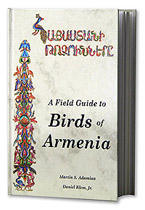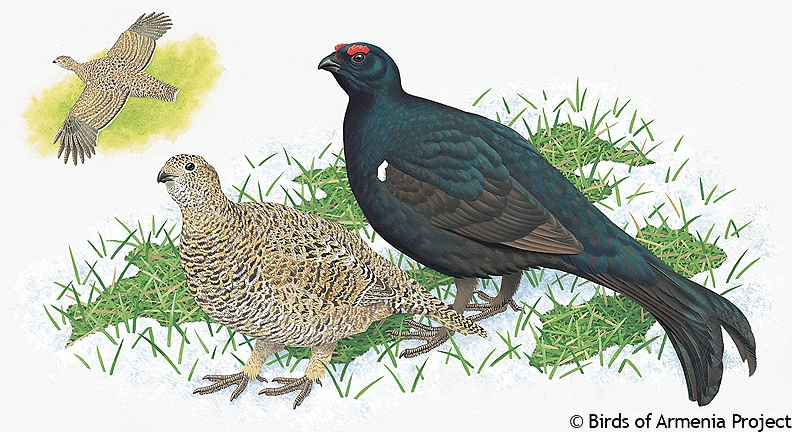- Pictures of All Birds
- Find Bird by Common Name
- Find Bird by Scientific Name
- Find Bird by Armenian Name
- Orders of Birds
- Distribution Maps
- Location of Armenia
- Species of Special Concern

Purchase the Field Guide
© Copyright Birds
of Armenia Project

| Armenian Name: | Կովկասյան մայրեհավ |
|---|---|
| Species Status: | Endangered Species - Species of Special Concern |

See Plate 20 for Caucasian Grouse and other similar species
| Resident Status: | Year-round resident |
|---|---|
| Abundance: | Uncommon |
| Length: | 38-52 cm, Wing Span:58-62 cm |
| Distribution Map: | Map 89. |
| Adult: | Male is glossy black with a bright red comb over the eye and small white shoulder patch. Tail is long and divided with the tips curving down and outward. Females are yellow-brown intricately barred with gray and black above; breast and belly gray barred with black and yellow-brown. |
| Juvenile: | Closely resembles adult female. |
| Behavior: | Feeds in meadows above deciduous woodlands and in groves of Mountain Ash and Birch. Dust bathes on dirt tracks. In spring, males display to females in groups. |
| Habitat: | Edge of subalpine meadows, birch groves, rhododendron thickets at 1500-2500 m; slightly lower elevations in winter. |
| Food: | Seeds, berries, buds, catkins. |
| Nest: | Shallow ground scrape lined with grass and feathers under shrub or in dense vegetation. |
| Eggs: | 51 mm, 2-10, yellow-white, red-brown spots. |